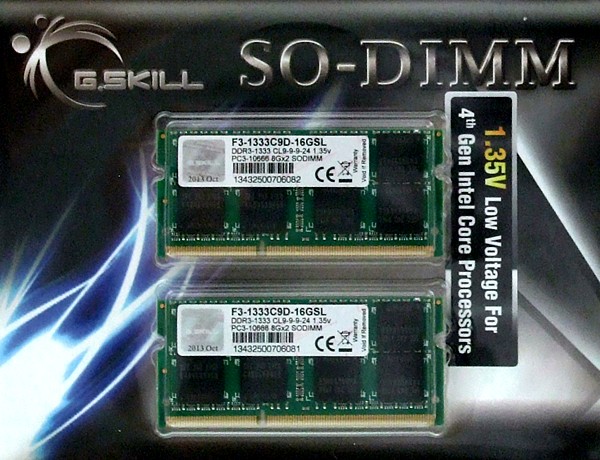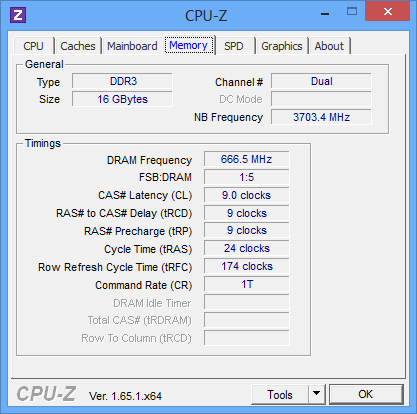Haswell And 1.35 V Memory: Three DDR3 SO-DIMM Kits, Tested
When it comes to memory, most of our focus is on the desktop and its replaceable CPUs. The mobile side typically moves slower. But Intel's Haswell architecture imposes interesting changes, and we saw fit to test SO-DIMMs down at their new 1.35 V ceiling.
G.Skill Standard DDR3-1333
The ability to support high data rates on a CPU with an integrated memory controller requires a modern processor and properly programmed firmware. One of those requisites is often missing from previous-generation machines. G.Skill supports the broader market by producing lower-cost modules for those systems.
Sold under the G.Skill part number F3-1333C9D-16GSL as a dual-channel kit, CPU-Z misreports the tRAS of its F3-1333C9D-8GSL modules at 25 cycles in one of our test systems. Had our platform not been DDR3-1333-capable, DDR3-1066 CAS 7 is also supported.
Regardless of what CPU-Z said about the SPD table, our test platforms correctly set the 9-9-9-24 timings we were looking for at the memory’s highest-rated DDR3-1333 data rate.
Get Tom's Hardware's best news and in-depth reviews, straight to your inbox.
Current page: G.Skill Standard DDR3-1333
Prev Page Ripjaws DDR3-1600 Low Voltage Next Page Test Hardware And Software Configurations-
Jaroslav Jandek ReplyIt'll be more difficult to explain why the -4770R saw so much less benefit from higher data rates than the -4770K.
The R version has 128MB of L4 cache. At 1280x720, it is large enough for all index and vertex buffers and most textures. That is why main memory speed doesn't significantly affect Iris Pro 5200... -
InvalidError Having 128MB L4 cache certainly skews things around for IGP performance, no surprise there.Reply -
mouse24 Huh, fairly surprised I didn't know about the 1.35v requirement. What happens if you pop in 1.5v in there? Is this just a power savings thing or did intel really mess with their memory controller for laptops?Reply -
Isaiah4110 Wow! I know this article is about memory, but the game benchmark data for Iris Pro actually impresses me quite a bit!Reply -
Crashman Reply
Tell one of these companies that makes upgrade processors to solder the 4770R on an 1150 adapter :)12435372 said:Intel really should've made socketed cpus with Iris Pro
-
zodiacfml AMD must have been very envious with this Iris Pro having embedded 128MB of fast memory....which should be plenty useful for their AMD's APUs.Reply -
de5_Roy Reply
intel claims that the edram costs around $80. that'd jack the a10 6800k price over $200 only to benefit the igpu (possibly the same with gddr5). imo, the weaker cpu cores wouldn't benefit much, if at all. that'd make the apus of poor value and people will argue against the apus claiming you can have a faster configuration under $200 (e.g. core i3 4110/fx6300 + radeon 7770/7750) without requiring the edram. as for core i7 4770R (and other R skus) - it's way too expensive. afaik, brix pro is barebones, the whole pc might cost near $800-1000 fully configured.12436339 said:AMD must have been very envious with this Iris Pro having embedded 128MB of fast memory....which should be plenty useful for their AMD's APUs.



